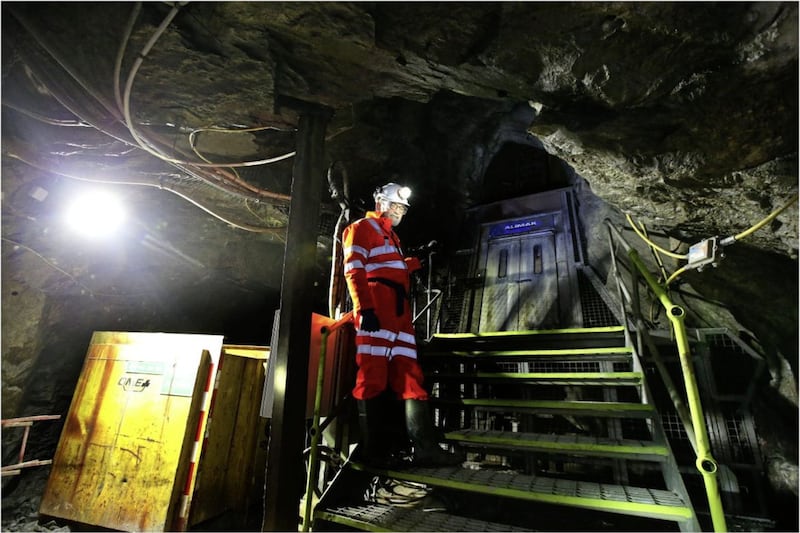A PLANNING application has officially been lodged to build a new £750 million gold mine in Co Tyrone, which could create over 1,000 jobs west of the Bann.
Canadian firm Dalradian Resources today lodged plans with the Department for Infrastructure for building work at Curraghinalt underground mine in west Tyrone, with the company stating the major investment promises to create "hundreds" of permanent jobs.
In one of the largest foreign direct investments proposed for Northern Ireland in the last decade Dalradian has said $1 billion (£750 million) is to be spent building and operating the mine over the lifetime of the project (25 years), with £46.3 million of private investment already secured towards the latest phase of work.
Plans to develop the mine at Greencastle have previously been met with opposition from local residents and just last week Sinn Féin members at the party's ard fheis backed a motion opposing the future granting of permission for private mining precious metals in Ireland. Much of the opposition is centred upon the use of cyanide to remove the precious metal from the ore, but Dalradian chief executive Patrick Anderson insists the process is safe.
"Everything that we have done to date has been to plan a project that is safe, that is environmentally safe, that is safe for the people that will be working there. As part of the process for the planning application we fully expect and encourage a public inquiry, where we can talk openly about what we propose to do and hear the concerns that will be aired."
"We're building a safe project. Everything that leaves the plant will be safe, there's no cyanide that will be outside the confines of the plant," Mr Anderson said.
Since acquiring the land in 2010 Dalradian has spent over £100 million, drilling over 100km of core and creating 2km of underground tunnels at the site, which employs 100 people.
They estimate there is "north of four million ounces" of high-grade gold at the site, describing the mine as one of the best of its kind in the world.
"There's only a handful of deposits of this high-grade nature on the planet right now. This is one of the best gold deposits on the planet right now," Mr Anderson said.
In addition to roughly 300 posts created through the 18-month £150 million construction phase Dalradian estimate that 350 permanent direct jobs will be created along with hundreds more as a result of the development.
"You'll have consultants, contractors and surrounding that you'll have your suppliers, hospitality, all the other sorts of work needed to support such a large workforce. In Canada typically if you want use it as an example, for every one mining job, there's three to five other jobs created."
Mr Anderson insists the "permanent positive impact" on the economy far outweighs any perceived negatives.
"I am confident our submission demonstrates that we can deliver a sensitively designed and well-thought-out project that will provide economic benefits to the region and solid returns to our shareholders using environmental best practices."
"We are confident that a gold mine in Tyrone will not be only be economically transformative for the county but will help support a range of businesses across Northern Ireland," he added.
The planning application to permit the building of a mine at Curraghinalt is supported by an environmental statement, including contributions from local agencies and independent experts. Dalradian has held over 40 meetings with government regulators along with consultation sessions attended by more than 270 people . In addition, more than 800 people have attended tunnel and site tours since the summer of 2016.
The Curraghinalt Project has been deemed “regionally significant” and therefore the decision to grant planning approval rests with the DfI.
Given the scale of the project, it is expected that a public inquiry will be held prior to a final decision being taken, which takes approximately one year.







